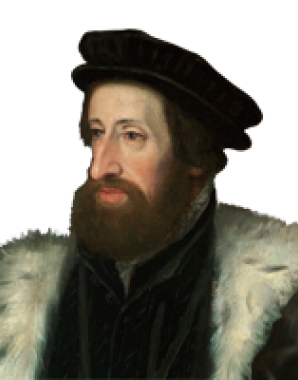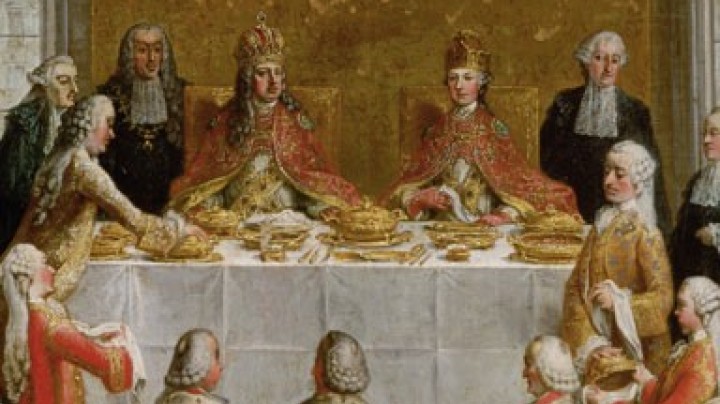The ‘completer’: Ferdinand I
Ferdinand I’s most pressing task in the artistic sphere was to continue and complete the unfinished works initiated by his grandfather. He too made skilful use of print-making as a medium of representing his imperial status.
Ferdinand I, grandson of Maximilian I, was born and brought up in Spain. He assumed the reins of government in Austria from 1521, aided by his Spanish advisors. In contrast to his grandfather he established permanent residences in several cities, where he found a flourishing humanist culture. In Vienna urban culture and courtly aristocratic art coincided: artists worked to commission not only for the imperial court but also for the humanistically cultivated middle classes and other official patrons. The city also provided an audience for displays of courtly magnificence.
Contacts with foreign countries were encouraged, and some members of the nobility encountered works of art in other countries when on diplomatic missions. During the course of the sixteenth century there was a steady increase in the number of foreign architects, painters, sculptors and craftsmen invited to work in Austria.
Like his grandfather, Ferdinand I sought to promote art as an expression of the power and tradition of the dynasty and thus to position himself against the ascendant nobility from the provincial Estates. He took over the circle of artists patronized by Maximilian and continued the latter’s unfinished woodcut projects. The Triumphzug was eventually published for the first time in 1526. He was also entrusted by his brother, Emperor Charles V, with the task of continuing the work on the unfinished tomb of Maximilian I.
Print-making and engraving boomed during this era, and could be exploited – both in highly elaborate and expensive publications and in the rising numbers of news-sheets – for the purposes of courtly display and propaganda. Official publications and single prints glorified the exploits of the House of Austria in portraits and allegories.
The first Renaissance buildings in Austria appeared during Ferdinand’s reign. These were commissioned not only by the emperor but also the nobility and the increasingly powerful provincial Estates.



















